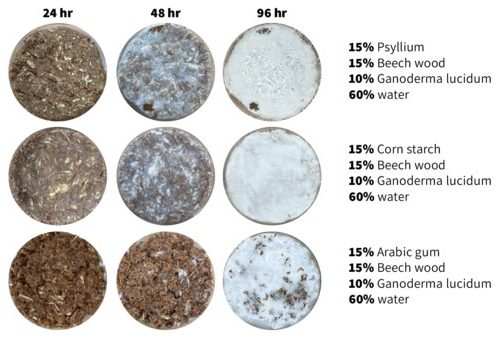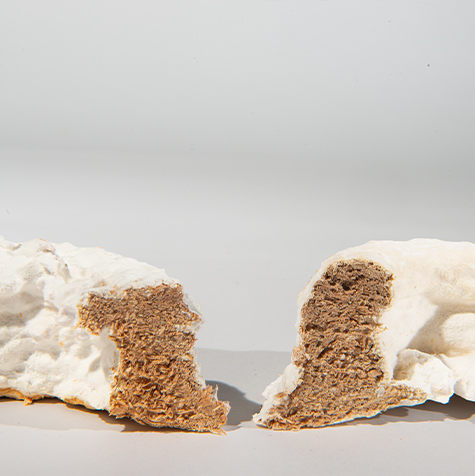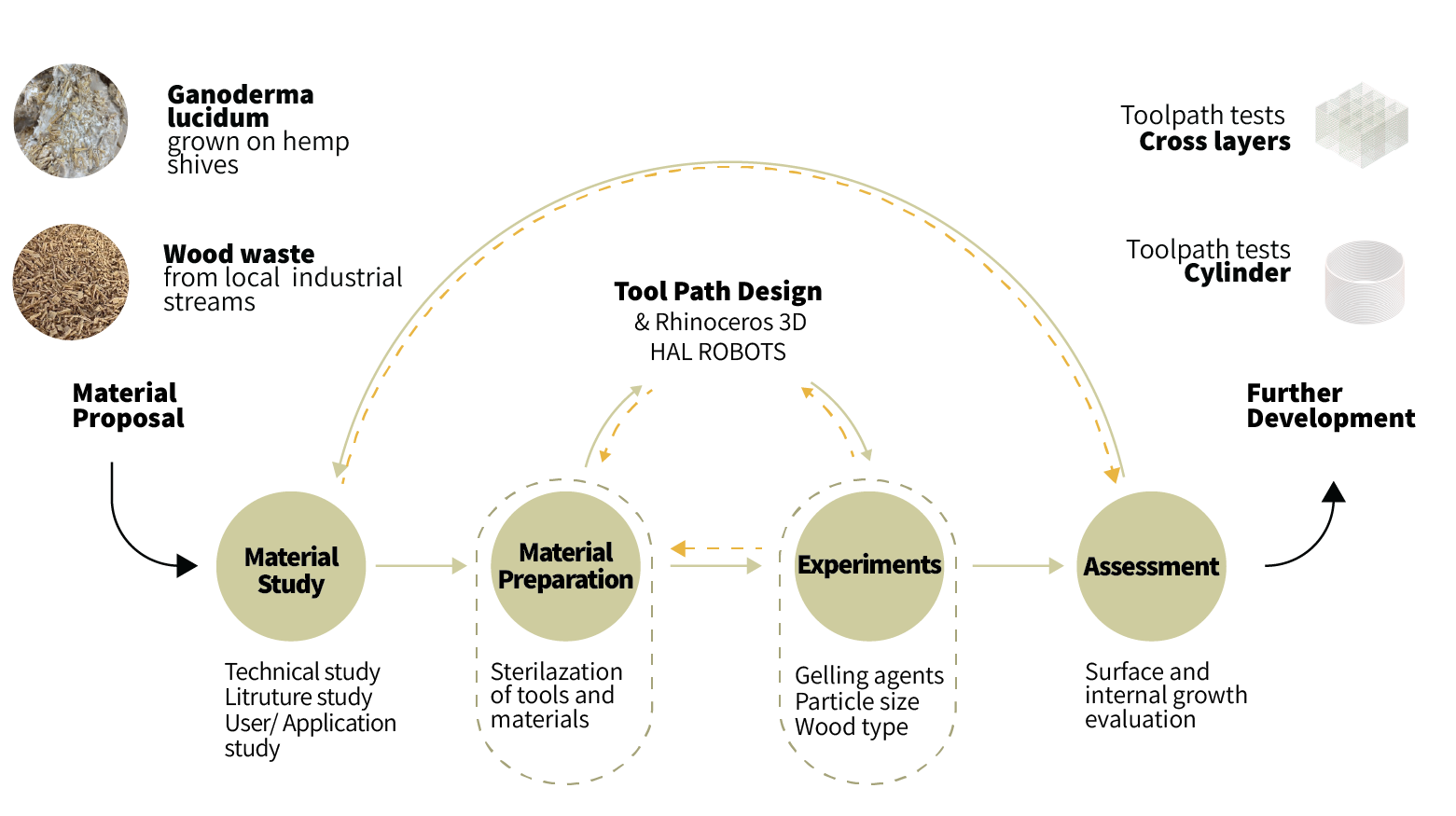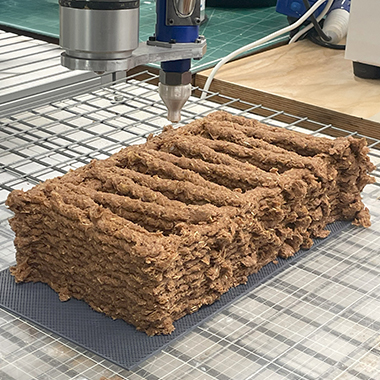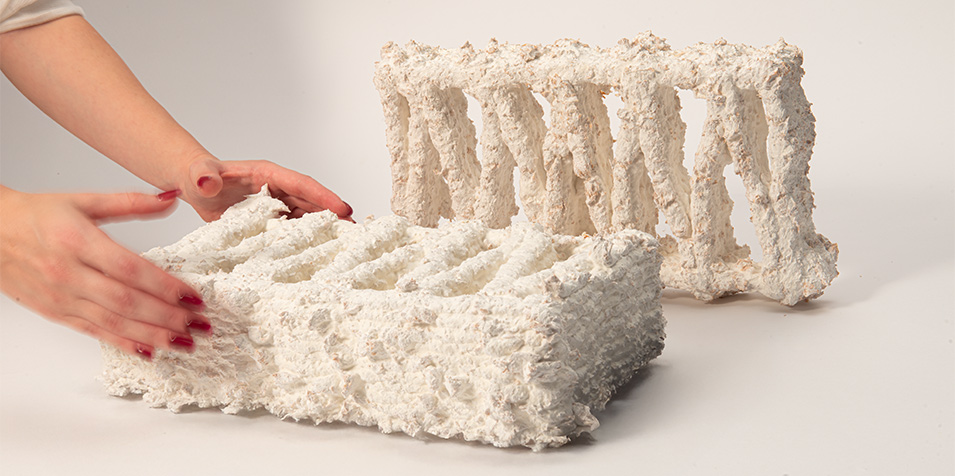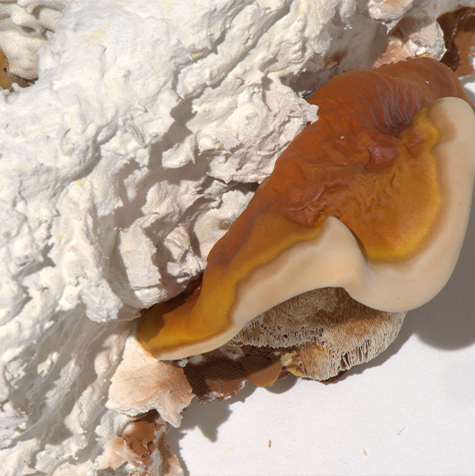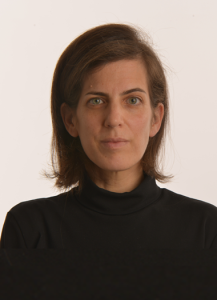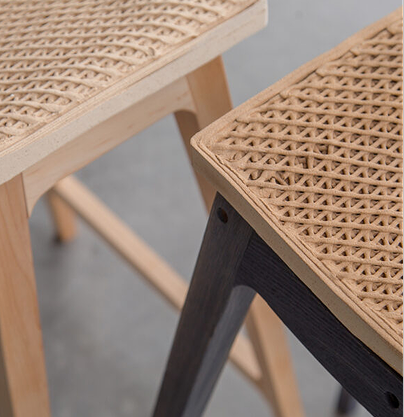This research explores the potential circularity of wood waste in architecture through the development of a recycled wood and mycelium mixture (RWMM) for use in Liquid Deposition Modeling (LDM), a 3D printing technique that minimizes waste and enhances fabrication efficiency. Utilizing local wood waste, specifically beech and oak wood sourced from carpenters, and Ganoderma lucidum spawn as a natural binder, it proposes a bio-based alternative to conventional building materials.
RWMM formulations are assessed for their printability as self-supporting elements through mycelium growth. A series of experiments tested various wood particle sizes and compositions to evaluate structural stability and print performance. Early trials using fine wood particles (1.6–2.0 mm) with psyllium husk as a gelling agent established print consistency, while subsequent tests with coarser, unprocessed wood waste (1.0–30.0 mm) demonstrated the feasibility of printing larger, self-supporting forms. Additionally, scaled experiments produced a thermal block using a zig-zag toolpath to increase surface area and promote mycelium colonization, confirming the material’s potential for large-scale applications.
Through the integration of computational design and robotic fabrication, the study evaluates the mechanical, acoustic, and thermal performance of RWMM components and establishes a design-to-fabrication workflow for producing tunable, high-performing, grown building elements. Ultimately, this research aims to position RWMM as a viable and scalable bio-based material system that enables the integration of waste streams into additive manufacturing, advancing environmental sustainability and architectural innovation within the AEC industry.
